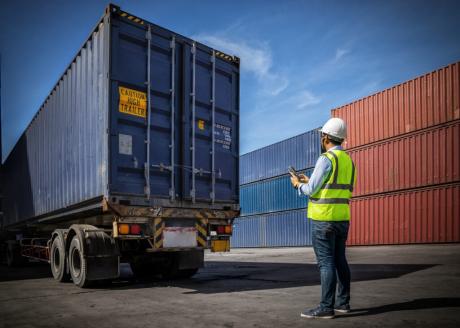Exports
Exporting is one of the basic economic processes consisting in exporting (selling) goods to entities based outside the country where its producer or seller is located. It is worth noting that the term "export" refers only to the sale of goods to countries which are not members of the European Union. In the case of EU countries, we are talking about intra-community trade, which is characterised by significantly fewer formal requirements for the importer, i.e. the company ordering the goods, as well as for the exporter.
What is export?
The term export of goods outside the EU refers to the export of various goods outside the country where they were produced or sold. During exportation, two basic events take place - the export of services or products outside the borders of the home country, as well as the import in the country of destination, which involves, among other things, a customs procedure in the last EU member state in the path of the goods. It is worth knowing that exports differ depending on the volume of sales and the number of economic entities involved in this event. While micro export refers to the process of export of goods by one exporter, in the case of macro export it is completely different. It covers export processes of the whole country.
Preferential tax on export amounts to 0%, however, obtaining it requires meeting several formal requirements. A paper export declaration or an electronic document received from the state system handling export declarations, after its authenticity has been examined by the tax authority, must be available. The tax payer is always the recipient of the goods in the country of destination.
Three conditions for the export of goods outside the European Union
Not all entrepreneurs are aware that export from Poland takes place only after simultaneous and unquestionable fulfilment of all three conditions included in the relevant law on export of goods outside the territory of the European Union. If one of these conditions is not met, the act is not an export according to the applicable law.
The first factor determining export is the sale of goods to entities based outside the European Union. This is the basic factor distinguishing export from intra-Community trade. The second is confirmation of export by the relevant Customs Office, located at the border of the European Union, and the third is the process of supply for consideration. In other words, export is not the transfer of goods outside the borders of the European Union in any form other than for payment.
What is an intra-community supply?
Intra-Community Supply of Goods (IIT) is the process of selling and exporting goods outside of the country to another country based in the European Union. Interestingly, however, similarly to export, also in WDT two basic conditions have to be fulfilled by the relevant act, which classify this process in an appropriate way. The recipient (purchaser) must be a taxpayer registered in an EU member state, the seller, in turn, must have a business activity. The assumption is that WDT is trade between entrepreneurs from separate countries, therefore the seller must also be a registered EU VAT payer and not benefit from any form of VAT exemption. This is a requirement that many entrepreneurs forget about. An intra-Community supply of goods takes place when the seller issues the invoice and the tax obligation lies with the recipient in the destination country.
Exports as a means of development
The basic advantage of exporting goods outside of the EU is the possibility of further development of the company through, among others, gaining new markets for goods or services. Particularly often entrepreneurs face the problem of reduced demand for manufactured goods as a result of market saturation or the lack of people in an optimal financial situation in the home country. Opening up to new markets outside the European Union very often leads to a significant increase in income, but this process requires relatively large investments and time-consuming research into the destination.
Another advantage of exports from Poland is the ability to change prices depending on the sales market. This advantage is best seen in the case of underdeveloped countries where production costs are at a very low level. In such cases, exporting goods outside the EU to slightly wealthier countries may increase incomes even several times, while maintaining similar production prices.
It is also worth knowing that exporting is a process which has a very positive impact on the whole national economy in many areas, both directly and indirectly. Exports contribute, among other things, to an improvement in the balance of payments as a result of supporting the national currency, and also to an increase in the number of jobs. The authorities of each country are perfectly aware of this and support the process of exporting goods and services outside the European Union through various types of subsidies for entrepreneurs or application of zero tax.
Exports and imports - basic differences
What is export? It is a process involving the export of goods outside the European Union, while import is the introduction of products from outside the European Union to trade on the internal market. This means that the importer has many different formal requirements to meet during the customs procedure. The procedure can be simplified or normal, also known as general. Under the general procedure, VAT must be paid directly to the customs office concerned or to an external company that carries out the clearance process, such as a carrier or freight forwarder, whereas under the simplified procedure, VAT must be declared on both sides (purchase and sale).
